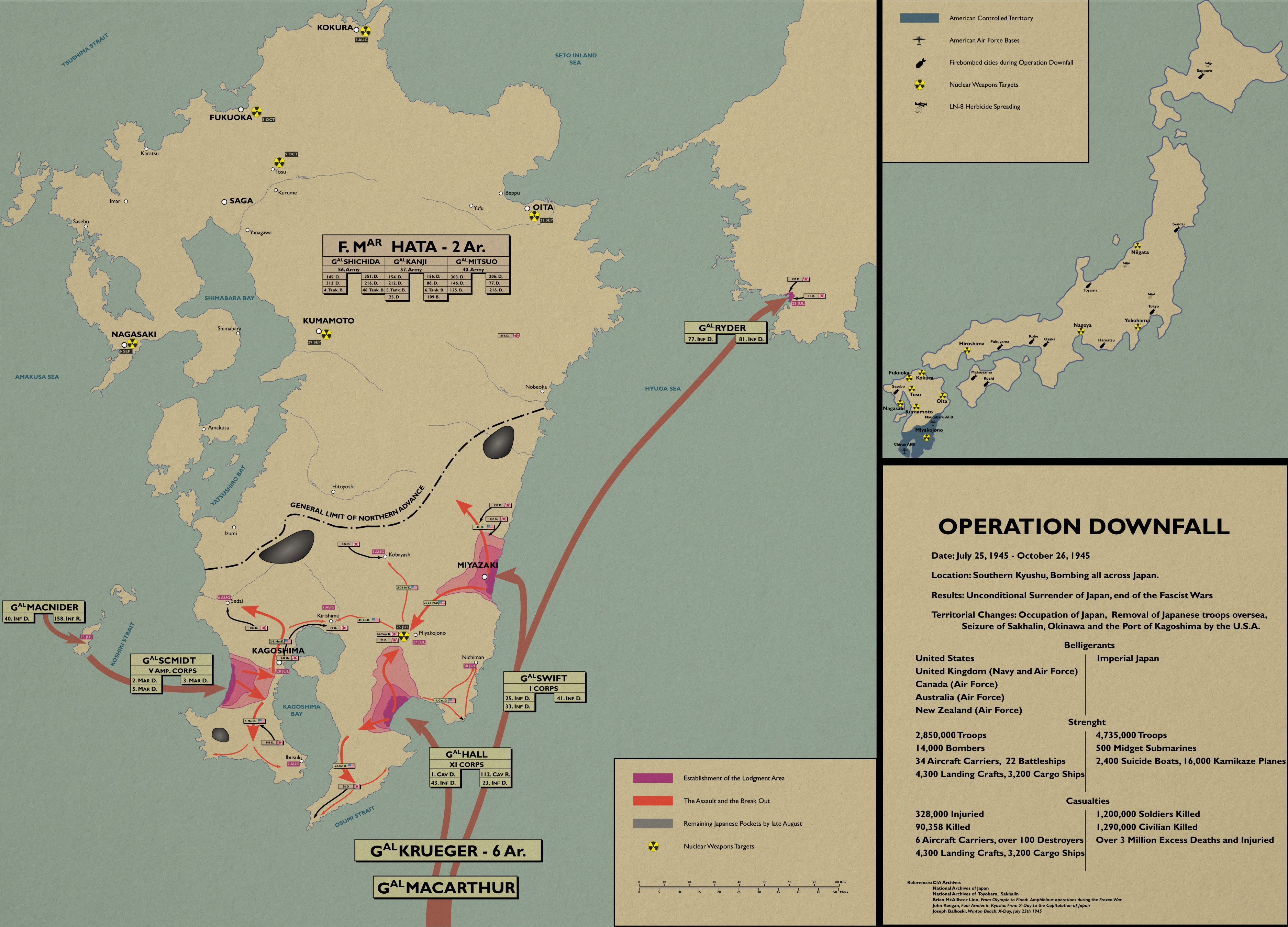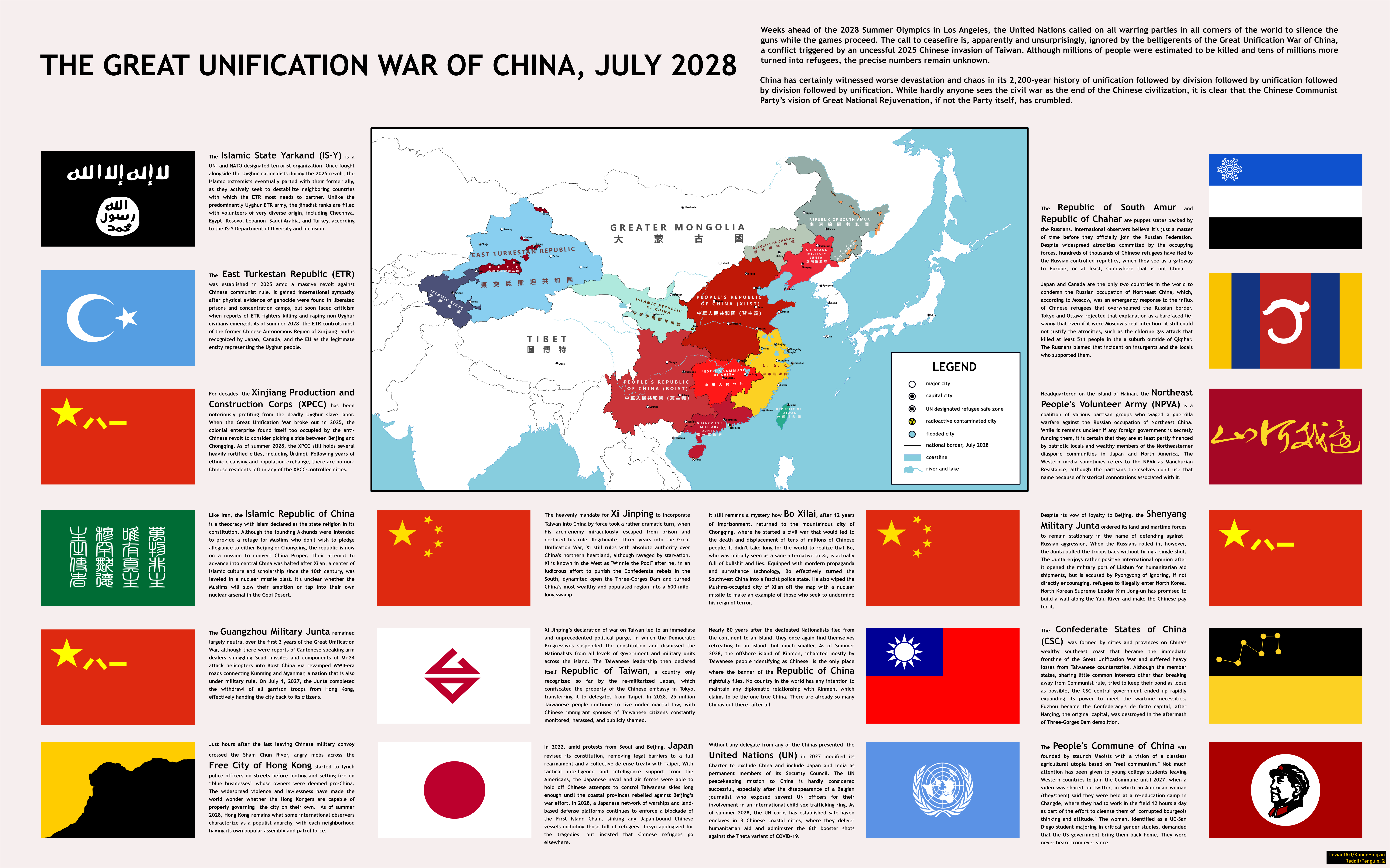HOME | DD
 TheKutKu — Thousand Week Reich - Operation Downfall, 1945
TheKutKu — Thousand Week Reich - Operation Downfall, 1945

Published: 2018-07-26 23:15:13 +0000 UTC; Views: 12164; Favourites: 127; Downloads: 42
Redirect to original
Description
Hello again! I know that this part of the timeline isn't very different from other Operation Downfall stories, but i wanted to show how it happened in TWRRest of the scenario - www.reddit.com/r/AP246/comment…
And its HOI4 mod in development - www.reddit.com/r/twrmod/
Discord (for the mod)- discord.gg/7Zyc8RM
In July 1945 the once great japanese empire was in ruins, four years before it gambled at Pearl Harbor and despite some initial success, the japanese navy and army was gradually pushed back toward the home islands by 1943 the American War Machine was in full strenght, outproducing Japan more than ten times, and a serie of disastrous naval battles in the Phillipines in mid 1944 striped Japan from the bulk of its Navy. But Japan would not surrender yet, as the two battle of Iwo Jima and Okinawa in december 1944 and February 1945 respectively have proven, and it became clear that the final battle would have to be fought on the home islands. In April 1945 the American High Command asked for a report on the readiness of the Atomic Weapon as some people thought it could force the emperor to surrend, but after learning that it wouldn't be available before late July at best, they decided to start the operation Downfall, the invasion of Japan, which would be helped by nuclear bombs.
On 25 July 1945 (X-Day), the United States forces consisting of the Sixth Army, supported by the US Third, Fifth, and the Seventeenth Fleets along with the British Pacific Fleet all supported from the air by the US Far East Air Forces, US Strategic Air Forces of the Pacific, the joint Anglo-Canadian Tiger Force, and the Australian First Tactical Air Force commenced Operation Olympic in the invasion of Kyūshū. This force went up against initially the 57th and 40th Armies, part of the Second General Army which consisted also of the 16th Area Army, the 216th Division, supported by the Volunteer Fighting Corps (国民義勇戦闘隊 Kokumin Giyū Sentōtai), supported at sea by 100 Koryu-class midget submarines, 250 Kairyu-class midget submarines, 1,000 Kaiten manned torpedoes, and 800 Shinyo suicide boats, supported in the air by the Sixth Air Army, of which consisted 5,000 aircraft assigned as kamikazes, 5,000 aircraft available for kamikaze service, 7,000 aircraft in need of repair. (The Volunteer Fighting Corps was very poorly equipped, mostly using molotovs, swords, knives, bayonets, polearms, staves, clubs and truncheons, sharpened bamboo and wood, antiquated firearms. Grenades were however very common).
The invasion was predated by a week of intensive American operations such as a diversionary landing with 2 divisions on the island of Shikoku, intensive bombing of the main communication and transport nodes of Kyūshū and an initial disembarkment on the small island of Shimo-Koshiki, off the coast of Kyūshū.
A few hours after the initial landings, the first nuclear weapon used in warfare was dropped on Miyakonojō, a city that held the Japanese 25th Division’s headquarters and a railroad junction. The heat of the blast simply tempered the Japanese resolve.
On 3 August, the second nuclear bomb was dropped, this time on an industrial target - the city of Kokura, to halt the city’s production of munitions, anti-aircraft guns, and beach head fortification materials. Fighting was apocalyptic. Kamikaze attacks, banzai charges, bunkers everywhere, suicidal grenade ambushes followed by a futile charge of swords, knives, and spears of the Volunteer Fighting Corps (KGS) resulting in their slaughter, civilians committing suicide in the name of the emperor. Despite their resolve, the Japanese High command gave the order of a retreat from the coast of southern Kyushu - where they were easy targets for the gunships - toward the mountains and forests, allowing quick advances in early august by the Invading forces, but the Japanese forces would constantly attack the American forces, preventing them from going inland, and inflicting heavy casualties on the defending troops.
By X+30 (August 24) American casualties were at 68,000 including 5,000 casualties at sea. Japanese casualties were at 195,000, not including civilian and KGS. The Japanese used chemical weapons against the invasion forces to little effect. In retaliation, the Allied forces deployed chemical weapons not only against military forces, but also against rice and corn crops. Using low-flying aircraft and cluster bombs, the affected crops would be utterly destroyed within twelve hours.
Following the first two bombs, by the end of August a third bomb was dropped on Hiroshima. Convinced the United States couldn’t possibly have more, the Japanese kept fighting on. In September the bloody fighting in southern Kyūshū continued. In this time period, the military casualties reached their highest rates. By the end of September, a bomb was dropped every week. The targets were Nagasaki, Niigata, Ōita, and Kumamoto. The Japanese resolve started to become malleable in the heat. In October, four more bombs were dropped on Nagoya, Fukuoka, Tosu, and Yokohama.
Finally, on October 26, X+93, V-Day the Japanese government surrendered, although not without complications. By X+93, American casualty figures were at 328,000 not including naval and air losses. Japanese losses were at 1.2 million, not including KGS and civilian casualties. Japanese resolve had melted into a steaming puddle. Celebrations broke out all across the United States and the war that had begun on December 7, 1941 was finally over. 45% of American casualties had occured in the last 93 days of the war.
In Berlin news of the new american bomb shook hitler, whose scientist and engineers asserted that such a weapon was unrealisable with their ressources, the fuhrer would order the immediate restart of the nuclear program, but the shortage of skilled scientist and spy ring in America would make this endeavour much harder than planned, and across the Atlantic the American War Machine was not resting. In both countries it was becoming obvious that the next decades would define not only the future of their nations, but of Mankind as a whole.
~~~~~~~~~~~~~~~~~~~~~~~~~~~~~~~~~~~~~~~~~~~~~~~~~~~~~~~~~~
But now you may ask, how does it translate into the mod?
The American Industry received a massive boost from investments during the war, and the nation still remember the war very well.
, but the generation of soldiers who fought during the war will be phased out, and the baby boom will bring younger citizens who don't remember the war and who won't make the same sacrifices their parents did for their country. As such the bonus from this national spirit will slowly become more powerful, every 5 years or so: in 1955 ; in 1965
. So it may be a good idea to attack Germany as early as possible during the civil war.
Thanks to EineKatze ( u/therealeinekatze ) for writting the description and making these national spirits and events!


























